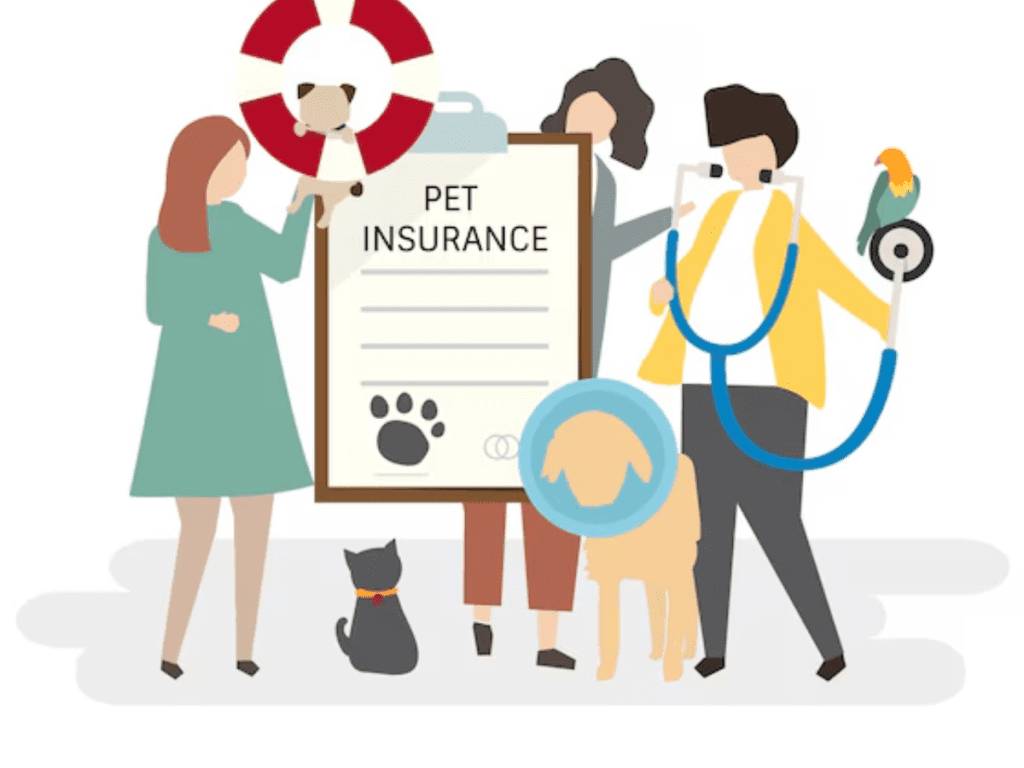Introduction
This will act as a good safety net that can cover veterinary costs arising due to an accident, so that your furry friend can receive medical attention without draining your pockets. Still, the frustration level rises when a claim is denied at the last minute when one really needs it. Even though a denial feels like a dead-end road, there are various things that you can do to challenge this decision and, possibly reverse it.
This comprehensive guide will walk you through the common reasons for claim denials, steps to appeal, and proactive measures to avoid denials in the future.
1. Understand Why Your Claim Was Denied
Pre-existing conditions; the first way of dealing with a denied claim is to identify why it happened. Insurance firms give explanations behind the denial that can be gotten from the denial letter or sometimes through your portal. Some are: Inclusion of conditions that existed even before the effective date of cover.
Most pet insurance policies do not cover pre-existing conditions. If your pet had signs, symptoms, or diagnoses of a condition before the policy was in effect, the insurer may reject the claim.
b) Policy Exclusions
Insurance plans often exclude certain treatments, including elective procedures, experimental treatments, and cosmetic surgeries. If your pet’s treatment falls into one of these categories, your claim may be denied.
c) Inadequate or Wrong Documentation
Missing documents, wrong billing information, or no veterinary medical records will lead to your claim being dismissed. Even a minor error in your submission can delay or be outright rejected.
d) Treatment Prior to Covered Period
Most insurance plans have waiting periods before you can start receiving coverage. When you submit a claim for treatment that occurred during the waiting period, your claim will probably be rejected.
e) Failure to Satisfy Policy Conditions
Some policies require routine wellness exams or preventive care to stay eligible for coverage. If you haven’t met these conditions, your insurer may reject your claim.
f) Failed Premium Payments
If you lost a premium payment, your policy might have become inactive and the insurance firm denied your claim. Always keep track of your premiums so that their payments are made on time. .
g) Claim Submission After the Deadline
There is a specified period during which you must file a claim with an insurance firm. Filing after the deadline may deny your claim, regardless of the validity of the treatment.
Once you identify the reason for the denial, you can determine the best course of action to challenge the decision.
2. Review Your Insurance Policy
Carefully read through your pet insurance policy to determine whether the denial was justified. Look for specific sections related to coverage limits, exclusions, waiting periods, and claim submission requirements.
Pay special attention to:
- Coverage details: Ensure the treatment your pet received is included in your policy.
- Exclusions: Check if the denial reason falls under explicitly stated exclusions.
- Filing deadlines: Verify whether you submitted the claim within the required time frame.
If you find that the insurer denied your claim incorrectly, you may have grounds for an appeal.
3. Collect Additional Evidence
If your claim was rejected for “lacking” or “incomplete” information, pull together any supporting documents that would help to solidify your case. This might include:
- Detailed medical records from your veterinarian
- Itemized invoices and receipts for the treatment
- Lab test results, X-rays or diagnostic reports
- **A written statement from your vet explaining the medical necessity of the treatment
Ensure that all documents are complete, accurate, and clearly linked to your pet’s case.
4. Contact Your Insurance Provider
Once you have reviewed your policy and gathered additional documentation, call your insurer’s customer support team. Be prepared to discuss:
- The reason for the denial
- Any discrepancies in the rejection explanation
- Additional information you have to support your claim
Calmly and professionally have the conversation. If the representative cannot settle your issue, request to talk to a claims specialist or a written explanation of why your claim was denied.
5. File an Appeal
If you feel your claim was unjustly denied, you can lodge an appeal for the decision. Most insurance companies have an appeal process, often requiring a letter of appeal that is accompanied by supporting documents.
How to Write an Effective Appeal Letter
Your appeal letter should include the following:
- A statement of your appeal – Write that you are appealing the claim denial for pet insurance.
- Your policy number – Specify your policy number, the name of your pet, and the date when the claim was lodged.
- A summary of your denied claim – State why your pet had to be taken in for that treatment and therefore why it must be covered.
- Any supplementary documents that would support the claim. Attach anything which would bolster your argument.
- Tone to be polite, yet professional: Respectful yet to the point
Submit an appeal through a medium of correspondence or online facility as appropriate. Send follow up mails or letters on a periodic basis to understand what is going on.
6. Consult with Your Veterinarian
Your veterinarian can be a valuable ally in the appeals process. Ask them to:
- Provide detailed medical records to support your claim.
- Write a letter explaining the necessity of the treatment.
- Clarify that the condition was not pre-existing if applicable.
Insurance companies are more likely to reconsider claims backed by professional medical opinions.
7. Escalate the Issue If Necessary
If your appeal is denied and you feel that your claim should be covered, you may want to escalate the issue:
- Request a higher-level review within the insurance company.
- File a complaint with your state’s insurance regulatory authority.
- Seek assistance from consumer protection organizations that handle insurance disputes.
These might add more pressure on the insurance company to reconsider your claim.
8. Change Providers
If you have encountered denial of claims often or terrible service from pet insurer providers, then it is probably a good idea to look for other pet insurance. The following are what to do before making the switch: Compare different coverage limits, exclusions, and reimbursement policies. Read customer reviews to know the rate at which claims are approved.
- Check for waiting periods and pre-existing condition policies before signing up.
Choosing a reliable insurer can save you from future claim denials and financial stress.
9. Prevent Future Claim Denials
To minimize the chances of future claim rejections:
- Read your policy carefully before purchasing insurance.
- Keep up with regular vet checkups to maintain policy eligibility.
- File claims promptly, and all necessary paperwork should be in place. –
- Maintain comprehensive veterinary medical records detailing the treatment or conditions your pet is receiving. –
- Ask your insurer for preauthorization on costly procedures, if you can.
Anticipating possible problems when you file a claim will prevent unwanted stress in handling your claims.
10. Find Other Alternative Options for Funding
If your appeal is denied and your claim continues to be denied, you might need to find alternative means of financing the veterinary care of your pet. Some of the alternatives include:
a) Payment Plans with Your Veterinarian
Most veterinary clinics are flexible enough to allow you to make installments in paying for your pet’s unexpected medical care. You should talk to your vet to explore any options they have to break down the cost of treatment.
b) Veterinary Charities and Aid Organizations
Several organizations provide financial aid to pet owners who are unable to cover veterinary expenses. Some of these organizations include:
- The Pet Fund – Helps raise funds for non-emergency veterinary care.
- RedRover Relief – Provides grants for pet owners who face life-threatening situations with their pets.
- Waggle – A crowdfunding site solely focused on supporting pet owners to pay for vet bills.
c) Crowdfunding
If these conventional forms of assistance are not feasible, you can create a GoFundMe or a similar crowdfunding project to generate money for the treatment of your pet. Most animal lovers would want to contribute for the well-being of an animal.
d) CareCredit or Pet-Specific Credit Cards
CareCredit is a healthcare credit card that can also be used to pay for veterinary bills. Additionally, some pet insurance companies are cooperating with financing partners to offer pet-specific credit cards with low or no interest over a specified period.
11. Know Your Legal Rights
In many countries and states, pet insurance companies are regulated. This means they have to adhere to fair business practices. If you feel that your claim was unfairly denied, check your rights as a policyholder.
a) Check State or Country Regulations
In the United States, National Association of Insurance Commissioners (NAIC) regulates pet insurance, and a few states have special consumer protection laws. Determine if your area has laws on the regulation of pet insurance claims.
b) Complaint Filing
If you feel that the denial was unfair, you can make a complaint by filing a formal one with:
- Your state’s insurance department for U.S. policyholders
- The Financial Ombudsman Service (FOS) in the UK, or
A consumer protection agency in your country
Sometimes, regulatory agencies can also revisit disputes and have the authority to compel insurers to reconsider a declined claim.
c) Seek Legal Counsel
As a last resort, you may consult a lawyer who specializes in insurance disputes. While this is usually not necessary, in cases of significant financial loss, legal action may be an option.
12. Educate Yourself Before Purchasing a Pet Insurance Policy
To avoid future claim denials, take the time to fully research pet insurance providers before enrolling in a plan. Here are the key factors to evaluate:
a) Coverage Options
Does the plan include accidents, illnesses, hereditary conditions, and chronic diseases?
Does it include alternative treatments (e.g., acupuncture, physiotherapy)?
Does it provide preventive care coverage (e.g., vaccinations, flea/tick prevention)?
b) Policy Exclusions
- What are the pre-existing conditions excluded?
- Are certain breeds excluded from specific medical coverage?
- Are there any age restrictions for enrollment?
c) Waiting Periods
- How long does the waiting period last before coverage begins?
- Do different conditions have different waiting times?
d) Reimbursement and Deductibles
- What percentage of the vet bill is reimbursed (70%, 80%, 90%)?
- Are deductibles annual or per-condition?
- What is the annual or lifetime payout limit?
e) Customer Reviews and Claim Approval Rates
Research real customer experiences by reading online reviews and checking the company’s claim approval rate. Insurers with a history of frequent denials should raise red flags.
f) Ask About Pre-Approval for Costly Procedures
Some pet insurance providers offer pre-approval services, which allow you to know if a treatment will be covered before it is performed. This saves you from getting a claim denial in the future.

